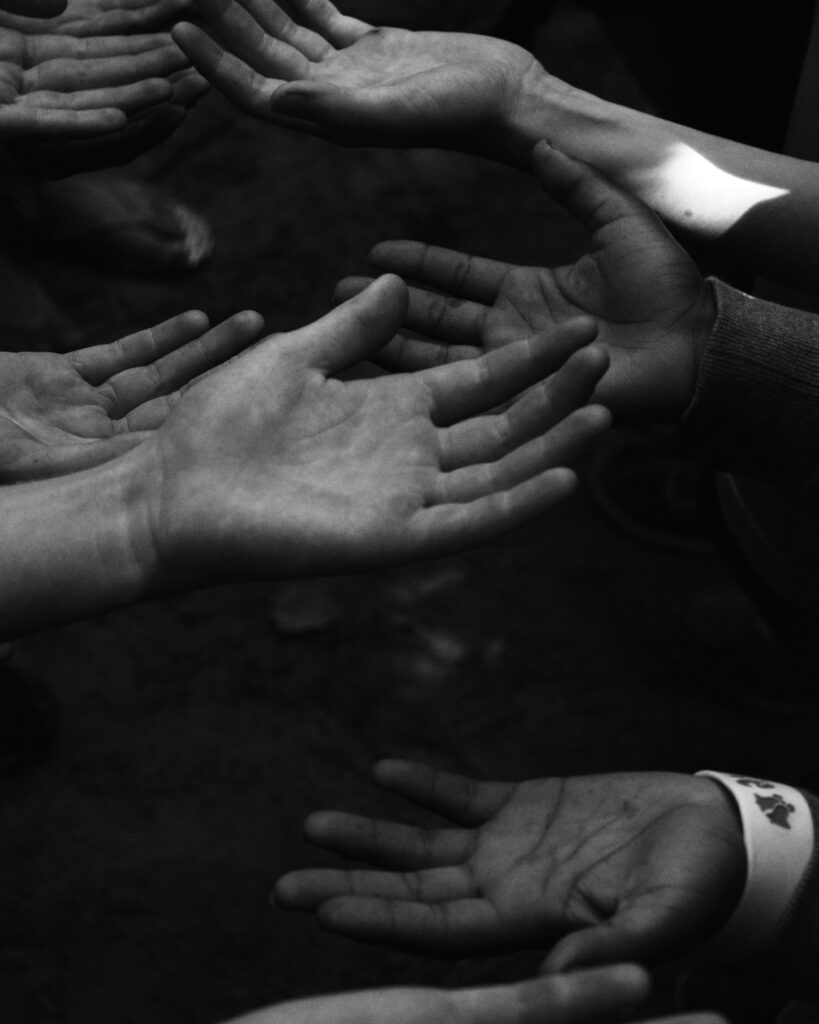“In the next … pandemic, be it now or in the future, be the virus mild or virulent, the single most important weapon against the disease will be a vaccine. The second most important will be communication.”
John M. Barry, author of The Great Influenza: The Epic Story of the Deadliest Plague in History
In their 2010 paper, ‘Nonverbal communication in psychotherapy’[1], Gretchen N. Foley, MD, and Julie P. Gentile, MD, reveal that body language, or ‘kinesics’ as it is known by psychology professionals, could account for 60 percent to 65 percent of all communication. This echoes the findings of Dr Albert Mehrabian, Professor Emeritus of Psychology at the University of California, Los Angeles, whose work in the 1960s explored congruence and incongruence between the spoken word and body language. Mehrabian’s experiments with tone of voice and nonverbal interactions resulted in the ‘7%-38%-55% Rule’ – these percentages relating to relative impact of words, tone of voice, and body language when speaking. Mehrabian has pointed out that his findings are often misinterpreted as generalised fact. Exceptions to the rule include certain instructions and environments. A cry to ‘Evacuate because there is a fire!’ carries its full meaning, no matter the tone. Likewise, armed forces require immediate adherence to a command, regardless of the individual soldier’s personal feelings[2].
The crux of Mehrabian’s ‘7%-38%-55% Rule’ is the emotional aspect of interaction, the well of feelings which springs beneath the spoken word. In these strangely biblical time of global pandemic and lockdown, we are all experiencing greater swells of mixed emotions than might usually be the case. But how do these play out in none-verbal terms, especially via the medium of video and, as I have recently found often to be the case, webinars which feature slideshows without a visible host?
In my previous blog, I talked about the ‘viral’ mimicry of facial expressions, and how those social cues might be potentially jeopardised over video. Will we learn to embrace this new and very necessary mode of business communication? Or will the global workforce become increasingly alienated from one another, retreating into the personal cocoons of email over virtual face-to-faces?
In this piece, I want to explore what, to me, feels like the key ingredient to effective video usage and team resilience, namely trust. How does trust work in a world without? When we can’t even pass another human being on the street without twitching and hissing internally, “Stay away!”, can we ever be expected to trust our fellow employees, clients, stakeholders, or, perhaps most crucially of all, seniors and board members? When a workforce is suffering the very real loss of loved ones to Corona virus, or having a health-worker spouse jeopardise their own and their family’s safety to care for others, or just living with the fear of contagion alongside the depressive effects of social distancing, it is all too easy for distrust can spread. In a recent survey from Bytestart.com, out of 2,100 employees in the UK, 69% said they didn’t fully trust their CEOs[3] – and this was pre-Covid 19!

Synchronous Interactions, those quirks of an eyebrow or half-smiles[4], occur in real-time. Arguably then, video huddles and meetings are the closest we can come to genuine interaction within business. But given the distractions of homelife, low bandwidth, or the surreal nature of our aloneness-in-virtual-communications, there is the distinct danger that these encounters become asynchronous. In other words, there is a delay – or even a missing – of vital communicative signalling. While companies working in the field of video promotion are eager to promote the bona fide value in witnessing hand gesticulation, body posture, and facial expression, there is one element of non-verbal communication which cannot be digitally replicated in any way. Physical distance – or Proxemics to give it its fancy word – is a very important conversational tool and indicator of trust. Sit too close and there is the danger of intimidating or discomforting your companion. Sit too far back and you will appear overconfident, distanced, or plain disinterested. But, equally, this can be a cultural quirk. In a group paper entitled, ‘Preferred Interpersonal Distances: A Global Comparison,’ the authors describe their research practices across people of varying ethnicities and how:
We found that the variability of social distance across cultures was predicted by temperature and gender. The higher the annual temperature of a country, the closer was the preferred distance to strangers. Furthermore, women on average preferred to maintain greater distance with strangers.[5]
Trust is a tricky thing to build, and all too easy to tear down. Most of us can remember that first day at the job, the appraising glances from our new colleagues and the careful chipping away at our bosses to persuade them they made the right choice and we really can do the job they employed us to do! Social psychologist, Michael Argyle hypothesised that the spoken word communicates the meaning about events external to the person communicating, but that nonverbal signifiers are used to build and strengthen interpersonal relationships. In other words, it is our body language which tells another person that we will live up to our verbal promises. By decoding these kinesics, we apply our own moral and ethical code to the speaker, thereby developing trust.
Put simply, it is our non-verbal communication which shows we care.
So what is the solution in a mid-Covid-19 business world? Am I right to flounder about in my office chair, exaggerating my synchronous interactions? Or should I trust that the medium of video communication will express both my verbal and non-verbal dialogue as effectively as is, right now, humanly possible? Can we trust in each other to mean what we say, without being reduced to digital employees? Can we trust in our CEOs, bosses, clients and fellow employees to deliver on their virtual promises, and can we trust in ourselves to communicate efficiently despite our social distancing? Will this current crisis bring about a whole new method of non-communicative interrupting, one where we believe in what the other person says without it being written all over their face?
NEXT WEEK: Digital Employees: The Faces of the Future
Bibliography:
[1] Foley GN, Gentile JP. ‘Nonverbal communication in psychotherapy’. Psychiatry (Edgmont). 2010;7(6):38-44. – rewrite!
[2] https://www.businessballs.com/communication-skills/mehrabians-communication-theory-verbal-non-verbal-body-language/)
[3] https://www.bytestart.co.uk/leadership-trust-during-covid-19.html
[4] The expression on a person’s face can even help determine if we trust or believe what the individual is saying. One study found that the most trustworthy facial expression involved a slight raise of the eyebrows and a slight smile. (Todorov A, Baron SG, Oosterhof NN. Evaluating face trustworthiness: a model based approach. Soc Cogn Affect Neurosci. 2008;3(2):119-27. doi:10.1093/scan/nsn009)
https://www.verywellmind.com/understand-body-language-and-facial-expressions-4147228#citation-3
[5] Agnieszka Sorokowska1, Piotr Sorokowski1, Peter Hilpert2, Katarzyna Cantarero3, Tomasz Frackowiak1, Khodabakhsh Ahmadi4, Ahmad M. Alghraibeh5, Richmond Aryeetey6, Anna Bertoni7, Karim Bettache8, Sheyla Blumen9, Marta Błażejewska1, Tiago Bortolini10,11, Marina Butovskaya12,13,14, Felipe Nalon Castro15, Hakan Cetinkaya16, Diana Cunha17, Daniel David18, Oana A. David18, Fahd A. Dileym5, Alejandra del Carmen Domínguez Espinosa19, Silvia Donato7, Daria Dronova12, Seda Dural20, Jitka Fialová21, Maryanne Fisher22, Evrim Gulbetekin23, Aslıhan Hamamcıoğlu Akkaya24, Ivana Hromatko25, Raffaella Iafrate7, Mariana Iesyp26, Bawo James27, Jelena Jaranovic28, Feng Jiang29, Charles Obadiah Kimamo30, Grete Kjelvik31, Fırat Koç24, Amos Laar6, Fívia de Araújo Lopes15, Guillermo Macbeth32, Nicole M. Marcano33, Rocio Martinez34, Norbert Mesko35, Natalya Molodovskaya1, Khadijeh Moradi36, Zahrasadat Motahari37, Alexandra Mühlhauser38, Jean Carlos Natividade39, Joseph Ntayi40, Elisabeth Oberzaucher38, Oluyinka Ojedokun41, Mohd Sofian Bin Omar-Fauzee42, Ike E. Onyishi43, Anna Paluszak1, Alda Portugal17, Eugenia Razumiejczyk32, Anu Realo44,45, Ana Paula Relvas17, Maria Rivas46, Muhammad Rizwan47, Svjetlana Salkičević25, Ivan Sarmány-Schuller48, Susanne Schmehl38, Oksana Senyk26, Charlotte Sinding49, Eftychia Stamkou50, Stanislava Stoyanova51, Denisa Šukolová52, Nina Sutresna53, Meri Tadinac25, Andero Teras54, Edna Lúcia Tinoco Ponciano55, Ritu Tripathi56, Nachiketa Tripathi57, Mamta Tripathi57, Olja Uhryn58, Maria Emília Yamamoto15, Gyesook Yoo59, and John D. Pierce , Jr.33 – ‘Preferred Interpersonal Distances: A Global Comparison’. Journal of Cross-Cultural Psychology 2017, Vol. 48. sagepub.com/journalsPermissions.nav


